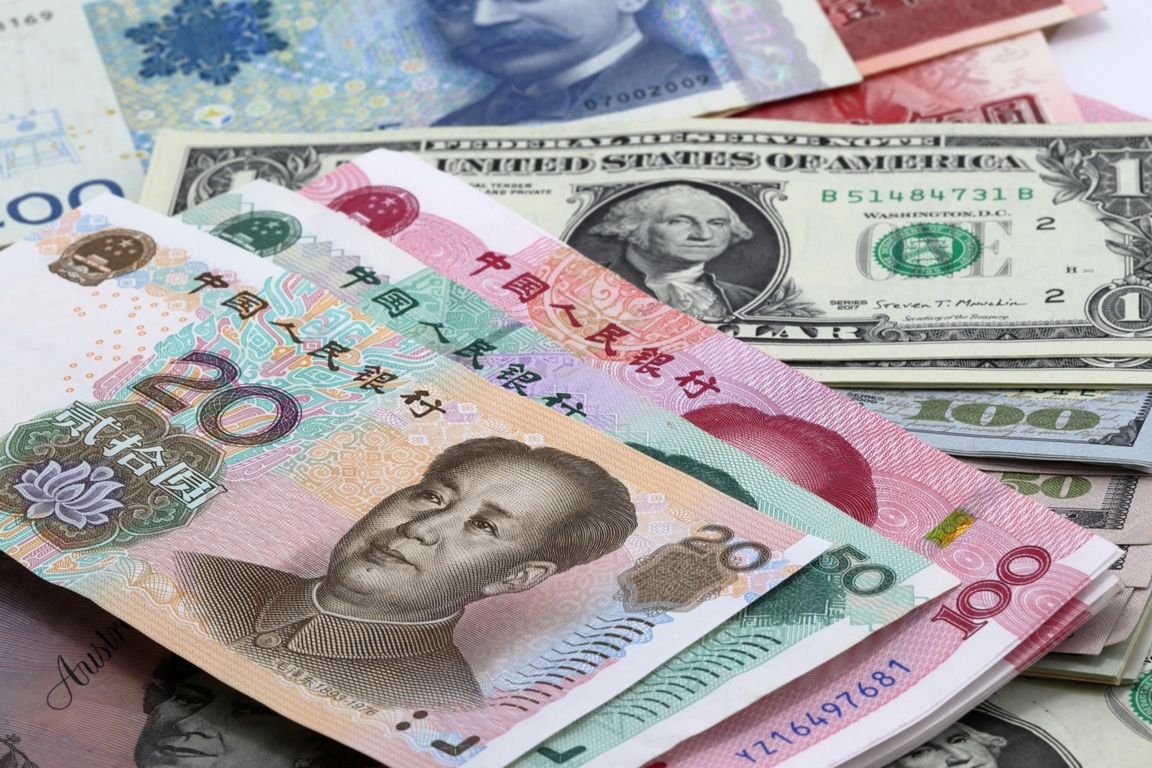Chinese Yuan Faces Headwinds Amid Disinflation Jitters
In the ever-shifting landscape of global economies, recent developments in China have sent ripples across the financial markets. The Chinese yuan, once a stalwart currency, finds itself among the worst performers as disinflationary trends continue to grip the nation. This article explores the ramifications of the yuan’s decline, delving into the intricacies of the current economic scenario and its impact on the broader Asian currencies.
The Yuan’s Unsteady Path Amid Deflationary Pressures
The week began with most Asian currencies experiencing a downward spiral, with the Chinese yuan leading the decline. Data released over the weekend pointed to a sustained deflationary trend in China, causing the yuan to lose 0.3%. The country’s consumer price index inflation fell at its fastest pace in three years, heightening concerns over a potential economic slowdown. These worries were further fueled by lackluster data prints for November, raising questions about the health of the Chinese economy.
Despite efforts to curb steeper losses in the yuan, including a stronger daily midpoint fix from the People’s Bank of China, sentiment toward the currency remains pessimistic. The market anticipates a test of the 7.2 level, reflecting the underlying apprehension about China’s economic trajectory.
Economic Indicators in Focus: Chinese Industrial Production, Fixed Asset Investment, and Retail Sales
As the week unfolds, attention is squarely on key economic indicators that could provide insights into China’s economic health. Industrial production, fixed asset investment, and retail sales data for November, scheduled for release on Friday, will be closely scrutinized. These indicators hold the potential to either allay or exacerbate existing concerns, shaping the narrative around China’s economic outlook.
On Monday, the Indian rupee displayed resilience, maintaining relative stability in contrast to its Asian counterparts, which experienced a decline due to an increase in U.S. Treasury yields. The rupee stood at 83.3725 against the U.S. dollar, showing minimal change from its previous session close at 83.3850. The Indian rupee oscillates within a narrow range, fluctuating between 83.01 and 83.40, following its record low of 83.42 on November 10th.
Foreseeing a “steady depreciation” for the local currency, Dilip Parmar, a foreign exchange research analyst at HDFC Securities, suggests that a sharp ascent will be challenging due to active central bank intervention.
As of the latest update, the dollar index stands at 104, while various Asian currencies have experienced a decline ranging from 0.2% to 0.9%. Despite this, the 10-year U.S. treasury yield remained stable during Asian hours, holding steady after a Friday surge to 4.24%.
Analysts suggest that the Reserve Bank of India (RBI) likely played a role in supporting the rupee’s value. According to information from five traders, the RBI is believed to have engaged in the sale of U.S. dollars, effectively curbing further depreciation of the rupee. A foreign exchange trader from a foreign bank noted that the central bank has been proactive in preventing the USD/INR exchange rate from surpassing 83.40.
Broader Asian Currencies Under the Shadow of China’s Woes
The impact of China’s economic challenges reverberates across Asia, with several currencies experiencing downward pressure. The Australian dollar, heavily exposed to Chinese trade, fell by 0.2%. Similarly, the South Korean won and the Singapore dollar lost 0.2% and 0.1%, respectively. Even the Japanese yen, which traded close to four-month highs last week, succumbed to a 0.3% decline. The interconnectedness of Asian economies underscores the significance of China’s economic well-being for the entire region.
Global Ramifications: Dollar Strengthens Amid Fed Focus and Receding Rate Cut Bets
While the Chinese yuan grapples with disinflation concerns, the global stage witnesses the dollar gaining strength. Stronger-than-expected nonfarm payroll data in the United States prompted traders to scale back bets on an early 2024 interest rate cut by the Federal Reserve. The dollar index and dollar index futures rose in Asian trade, signalling confidence in the U.S. economy’s resilience.
As the Federal Reserve concludes its two-day meeting, all eyes are on its outlook for interest rates. The strong labor market reading suggests a potential soft landing for the U.S. economy, providing a counterpoint to concerns over a global economic slowdown. The focus extends to U.S. inflation data, adding another layer of complexity to the intricate dance of global currencies.
Navigating Uncertainty in the Wake of Chinese Disinflation
The Chinese yuan faces headwinds amid disinflation jitters, sending shockwaves through Asian currencies and global markets. The upcoming economic indicators will serve as a compass, guiding investors through the stormy seas of uncertainty. As the Federal Reserve maintains a steady course, the world watches, recognizing the interconnectedness of economies and the delicate balance required to navigate the challenges posed by China’s economic landscape. The Chinese question remains central in shaping the narrative, not only for the yuan but for the broader dynamics of the global financial stage.
The post Chinese Yuan Faces Headwinds Amid Disinflation Jitters appeared first on FinanceBrokerage.






























